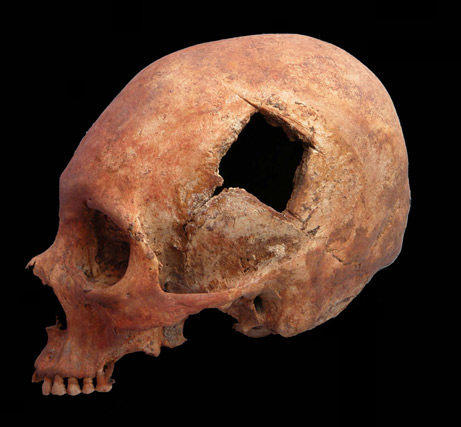National Geographic
"Inca surgeons in ancient Peru commonly and successfully removed small portions of patients' skulls to treat head injuries, according to a new study.
The surgical procedure—known as trepanation—was most often performed on adult men, likely to treat injuries suffered during combat, researchers say.
A similar procedure is performed today to relieve pressure caused by fluid buildup following severe head trauma.
Around the ancient Inca capital of Cuzco (see Peru map), remains dating back to A.D. 1000 show that surgical techniques were standardized and perfected over time, according to the report.
Many of the oldest skulls showed no evidence of bone healing following the operation, suggesting that the procedure was probably fatal.
But by the 1400s, survival rates approached 90 percent, and infection levels were very low, researchers say.
The new findings show that Inca surgeons had developed a detailed knowledge of cranial anatomy, said lead author Valerie Andrushko, of Southern Connecticut State University in New Haven.
"These people were skilled surgeons," she said.
...Trepanation was practiced as early as 400 B.C. in South America and is known from other parts of the world as well.
Archaeologists have long debated whether the skull perforations were conducted as a medical procedure or for ritual or cultural reasons.
With regard to the Inca, Tung said, the new study should settle the debate.
"I think the authors are spot on when they suggest that cranial surgery was performed primarily to treat head injuries," she said.
Those injuries may have most often been sustained during warfare, according to the new study's authors.
Nearly all of the surgeries were performed either near the middle of the skull or on the left side—the regions most likely to be injured during combat with a right-handed opponent, Andrushko noted.
In addition, some of the skulls showed signs of previous injury in the area where the operation was performed.
The fact that 19 of the surgical patients were women, however, suggests that the operation may have sometimes been performed for other reasons—possibly as an attempted cure for epilepsy or chronic bone infection, the authors note."

Cool! that's my favorite player on the Nationals right now, they just clinched the division going into the playoffs.
ReplyDeleteTreypan Turner!